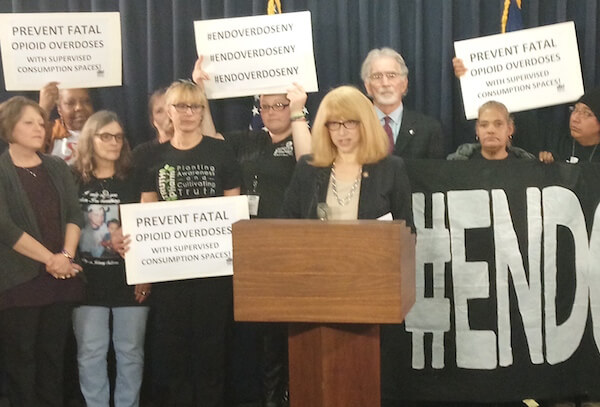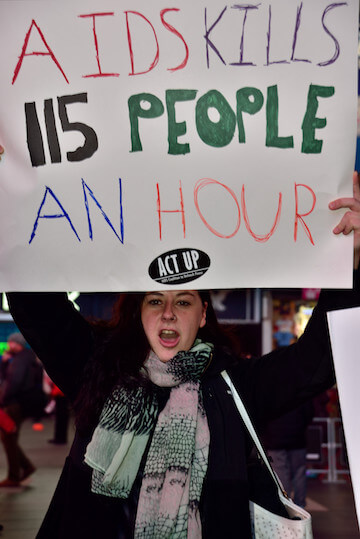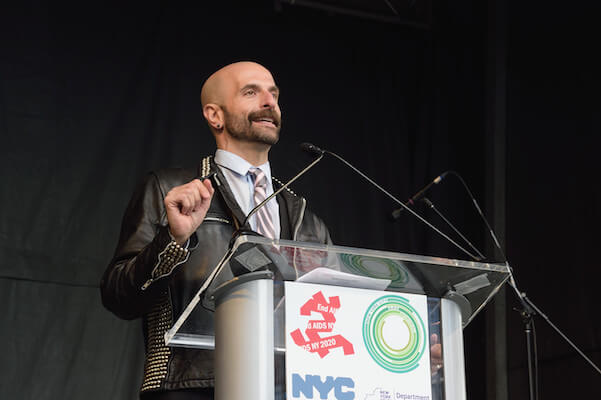Dan O’Connell, director of the State AIDS Institute. | GAY CITY NEWS
The state health department has significantly reduced its estimate of the number of Medicaid beneficiaries in New York who are using pre-exposure prophylaxis (PrEP) from 3,149 to 832.
“I think the number from last year wasn’t done by Medicaid,” said Dan O’Connell, director of the AIDS Institute, which is part of the state health department, in explaining the disparity between the two estimates.
The state health department now estimates that 310 Medicaid beneficiaries used PrEP — anti-HIV drugs used by HIV-negative people to keep them uninfected — between July 1, 2012 and June 30, 2013. Over the 12 months that followed, 358 Medicaid beneficiaries used PrEP. Since June 30 of last year, PrEP use has grown, with the department estimating that 832 Medicaid beneficiaries took Truvada between then and the end of February of 2015. Truvada is the only anti-HIV drug approved for PrEP.
Health department now says only 832 on HIV prevention meds, but number growing since 2014
The PrEP users in the earlier two periods may be largely the same people and those people may be among the 832 PrEP users who began the drug regimen in the eight months after June 2014.
“This is really a baseline of where we’re starting from,” O’Connell said. “Basically, for both of those time periods, there are about 300 people on PrEP.”
The new PrEP data, which the state health department called “preliminary,” was released in response to a Freedom of Information request made by Gay City News. The agency also released some limited demographic data about the PrEP users.
For the period from July 2012 through June 2013, fewer than six PrEP users were 14 or younger, 41 were between 15 and 24, 203 were between 25 and 49, 56 were between 50 and 64, and six or fewer were over 65. (The department did not specify a number for age ranges where six or fewer beneficiaries were using PrEP.) In that first time period, 257 PrEP users lived in New York City and 53 lived outside the city.
In the following 12-month period, beginning July 1, 2013, seven PrEP users were 14 or younger, 71 were between 15 and 24, 234 were between 25 and 49, 43 were between 50 and 64, and the remaining three were — simple addition indicates — over 65. In that second time period, 283 PrEP users lived in the city and 75 lived outside the city.
O’Connell supplied the estimate of 832 PrEP users for the third time period — July 1 of last year through February 28 of this year —without providing even the limited demographic data available for the earlier periods. There is no reason, however, to believe that the age breakdown from the most recent time period would be inconsistent with that from the first two time periods.
The state health department did not supply demographic data on the gender or race of the PrEP users for any time period.
The data on PrEP use by Medicaid beneficiaries does not include PrEP users who have private insurance, so the number of PrEP users in New York is certainly higher than 832. Estimates of PrEP use produced by Gilead Sciences, which manufactures and markets Truvada, have been consistently conservative, though they have shown steady growth in PrEP uptake over time.
PrEP is a central component of the Plan to End AIDS, which seeks to cut the number of HIV infections in New York State from the current roughly 3,000 annually to 750 a year by 2020. The plan will also use post-exposure prophylaxis (PEP), which prevents infection in HIV-negative people with a recent exposure to the virus, and treatment as prevention (TasP), the use of anti-HIV drugs by HIV-positive people to make them no longer infectious to others. All three drug regimens have a proven effectiveness when taken correctly.
The growth seen in the Gilead and state health department PrEP use estimates is likely attributable, at least in part, to increased public discussion about PrEP. Governor Andrew Cuomo announced his support for the Plan to End AIDS at the start of last year’s LGBT Pride March in Manhattan.
“There’s so much talk about PrEP,” O’Connell said. “We hope the governor’s announcement moved the needle.”
Over 90 percent of new HIV infections in New York are in New York City and every demographic group in the city except gay and bisexual men have seen declines in new infections in recent years. For the plan to work, tens of thousands of gay and bisexual men will likely have to be taking PrEP. A high percentage of those who are HIV-positive, probably at least 50 or 60 percent, must be virally suppressed, as well.
A study presented in February at a scientific conference by Dr. Robert Grant, a researcher at San Francisco’s Gladstone Institutes, estimated that San Francisco would see a 70 percent cut in new HIV infections if 95 percent of the roughly 16,000 people in San Francisco who are in the “highest risk strata” for HIV infection, or nearly 14,200 people, were taking PrEP and 62 percent of HIV-positive people were taking anti-HIV drugs and were no longer infectious. New York’s epidemic is eight times larger than San Francisco’s epidemic.



































